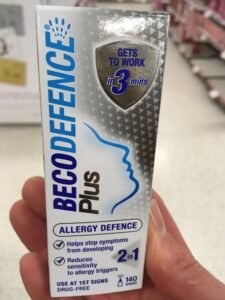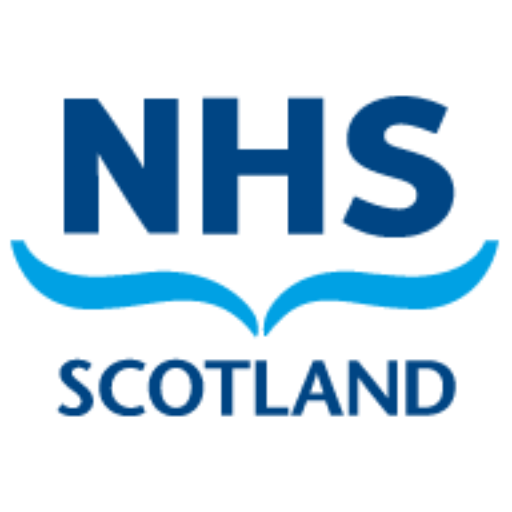Tree & Grass Pollen – Hay fever
Being allergic to grass and/or tree pollen is the cause of hay fever. Your eyes can get swollen, red and itchy (conjunctivitis), your nose can be blocked, or runny, or both, you may find yourself sneezing incessantly (rhinitis). You can get an itchy throat and itchy ear canals.
Some people get these symptoms all year round, which is likely to be due to other allergies e.g. cat, dog, dust mite. This is called allergic rhinitis, or allergic rhinoconjunctivitis.
You can be allergic to grass, trees, weeds, or moulds, sometimes just a specific group of trees, but often a combination of these things. It just depends. You can be allergic to cut flowers too but this is less likely to cause chronic symptoms.
The clue to what is triggering your hay fever is when you get symptoms. If you are really unlucky, you can get hay fever symptoms from January or February (when hazel trees start producing pollen), right through to October, when weeds such as nettle finally die away! The grass pollen season in Scotland generally starts on the 1st of June, peaking in mid-June to mid-July.
For more information about pollen seasons, see the University of Worcester Pollen Lab page
Symptoms also vary depending on when grass is getting cut (if you are grass allergic), where you are (city or countryside), the time of day, and the weather.
Hay fever is often dismissed as an inconvenience. But some children feel really tired with it, often they can’t sleep well with it, often they struggle to concentrate with it. There is even evidence that children with hay fever do not do as well in their exams (which typically take place in the summer, after all) as you would expect them to do. In children who also have asthma, hay fever is often a trigger for their asthma, and improving hay fever symptoms can help their asthma. Thunderstorms in particular can trigger asthma attacks, because of what happens to pollen in the air.
Management
Watch the pollen count, and choose activities inside or outside accordingly. Most weather forecasts give you the pollen count, otherwise there are apps that can help with this. But note that the time of day is important too – for grass pollen, the risk is greatest in the first half of the morning, and then from about 4pm in the afternoon, until late evening. But symptoms can persist into the early hours if temperatures are high.
Keep windows closed, particularly in the bedroom. Avoid sitting near open windows if you can’t close them. You might want to discuss this with school.
Wash hair more regularly. Don’t dry clothes outside.
Pollen barrier balms and nasal saline douches (sprays for washing out your nose) are available over the counter.
Big, wrap around sunglasses may help.
Holidays
Choose when and where you are going on holiday carefully, so you get away during the worst period, and you go somewhere it is likely to get better not worse. The north of Scotland and the islands have a short, late grass season (late June, early July), whereas South East England has a longer season than Scotland, staring in mid-May and lasting into September.
Beach holidays and just being on the coast are likely to be best.
For tree pollen, the season is generally earlier than it is for grass (see above), and there are parts of Scotland (Orkney, Lewis, Caithness, Sutherland) with very few trees.
For holidays abroad, see World pollen data
Medicines
Antihistamines – there is a range of different antihistamines available, both over the counter and on prescription. Some people find one works better than another. Sedating antihistamines eg Chlorphenamine (Piriton) should be avoided except at night.
Nasal steroid sprays are useful for both eye and nose symptoms. It is important to use them correctly, as there is a tendency to squirt most of it down the back of the throat and miss the affected parts of the nose. See the video here for how to use them. The dose can sometimes be increased but you should discuss it with your doctor first. A combined steroid/antihistamine nasal spray is also available.
Leukotriene receptor antagonist eg Montelukast – usually used for asthma, but works for hay fever too so good if you have both.
Short courses of oral steroids (for a maximum of 7 days) might be justified for special occasions.
Immunotherapy
Grass and tree pollen immunotherapy is available for adults, using either injections or tablets you dissolve under the tongue, but is not widely available in Scotland for children. In the most severe cases your GP can refer you to an allergy specialist for this.

Then there are a variety of topical treatments such as eye drops and nasal sprays. It is important to know how to give these properly, people often do it wrong, sometimes you only see benefit when you have been using them regularly for a week or more.
See video here about how to use your nasal spray properly. Long acting, non-drowsy antihistamines by mouth are also very useful, and for more persistent symptoms, these can be taken daily. Where one type or brand of medicine doesn’t seem to be working, it is worth trying an alternative or else a combination of medicines. Some asthma medicines eg montelukast will also help.
Where symptoms persist despite appropriate use of these treatments, a review in allergy or ENT clinic may be helpful to ensure the diagnosis is correct and to discuss other possible treatment options including desensitization.
Further Resources
![]() AllergyUK provides additional
AllergyUK provides additional ![]() factsheets for tree and grass pollen.
factsheets for tree and grass pollen.

